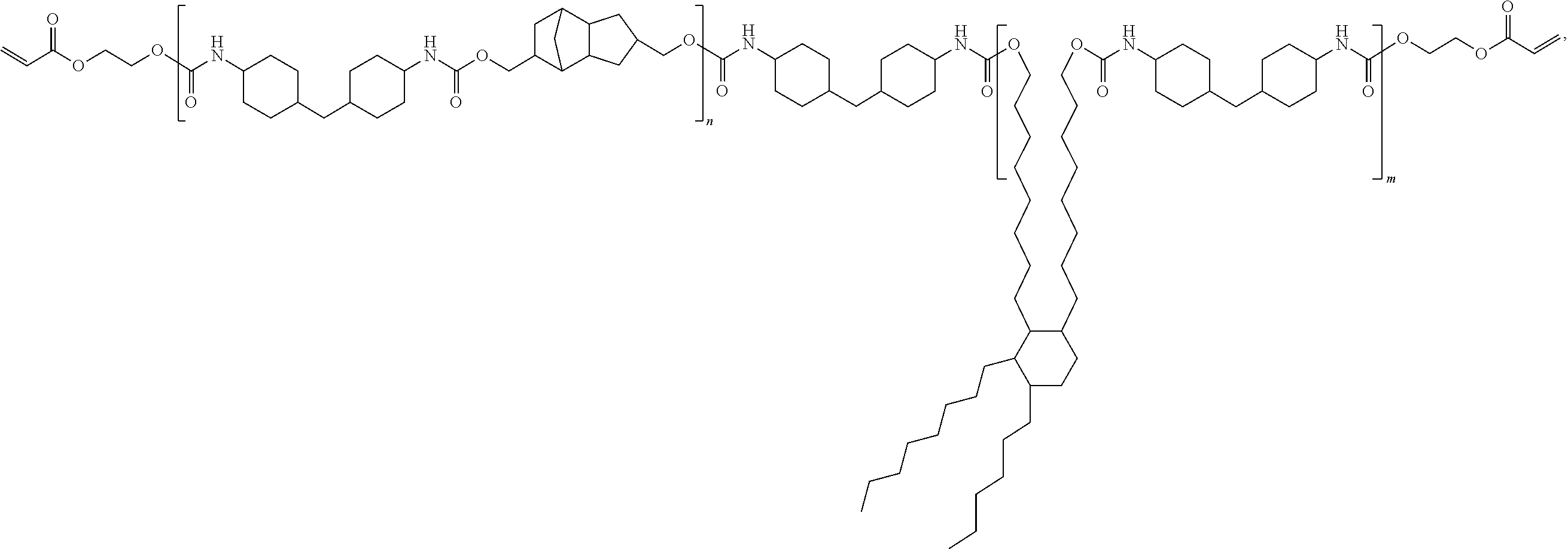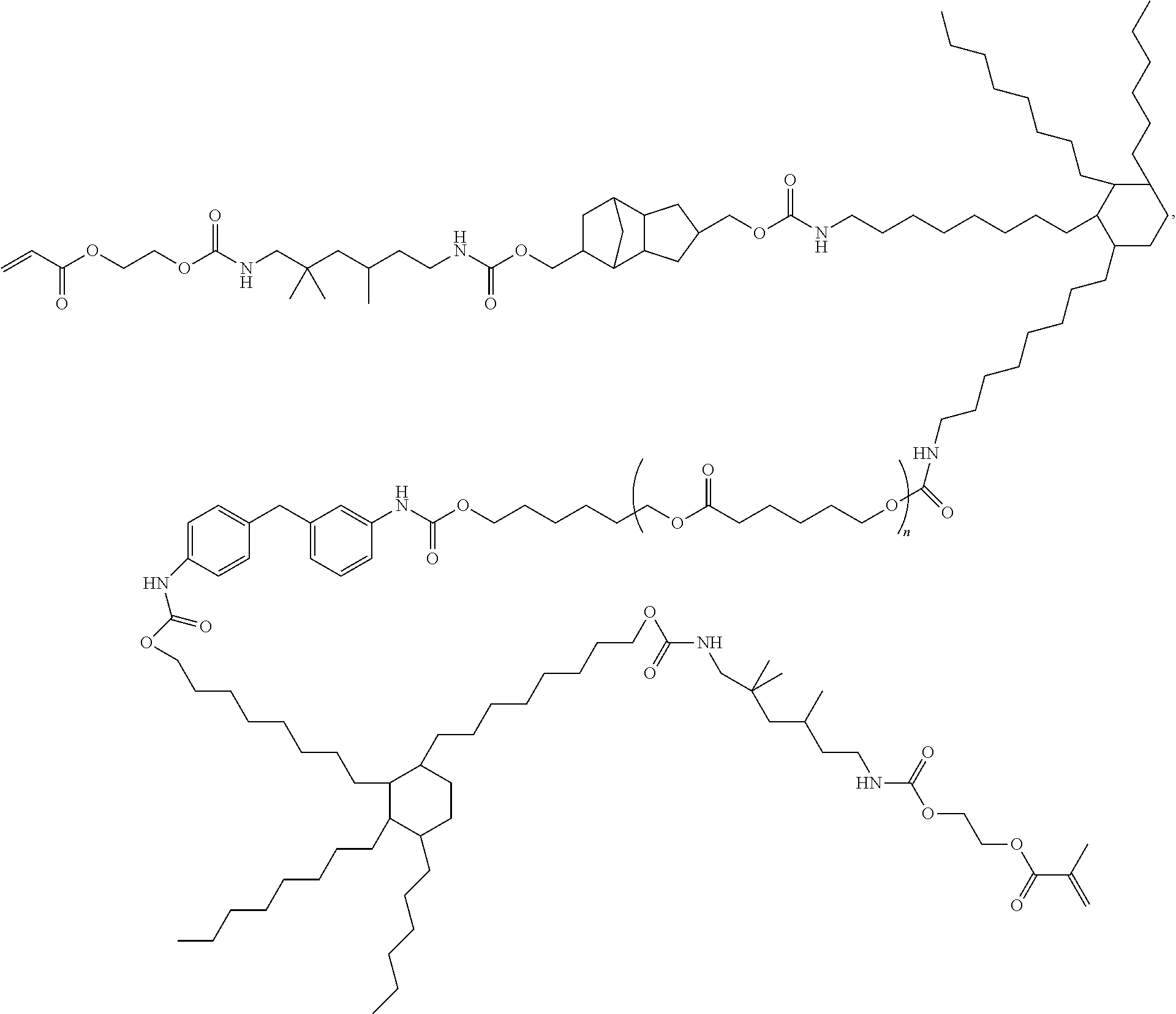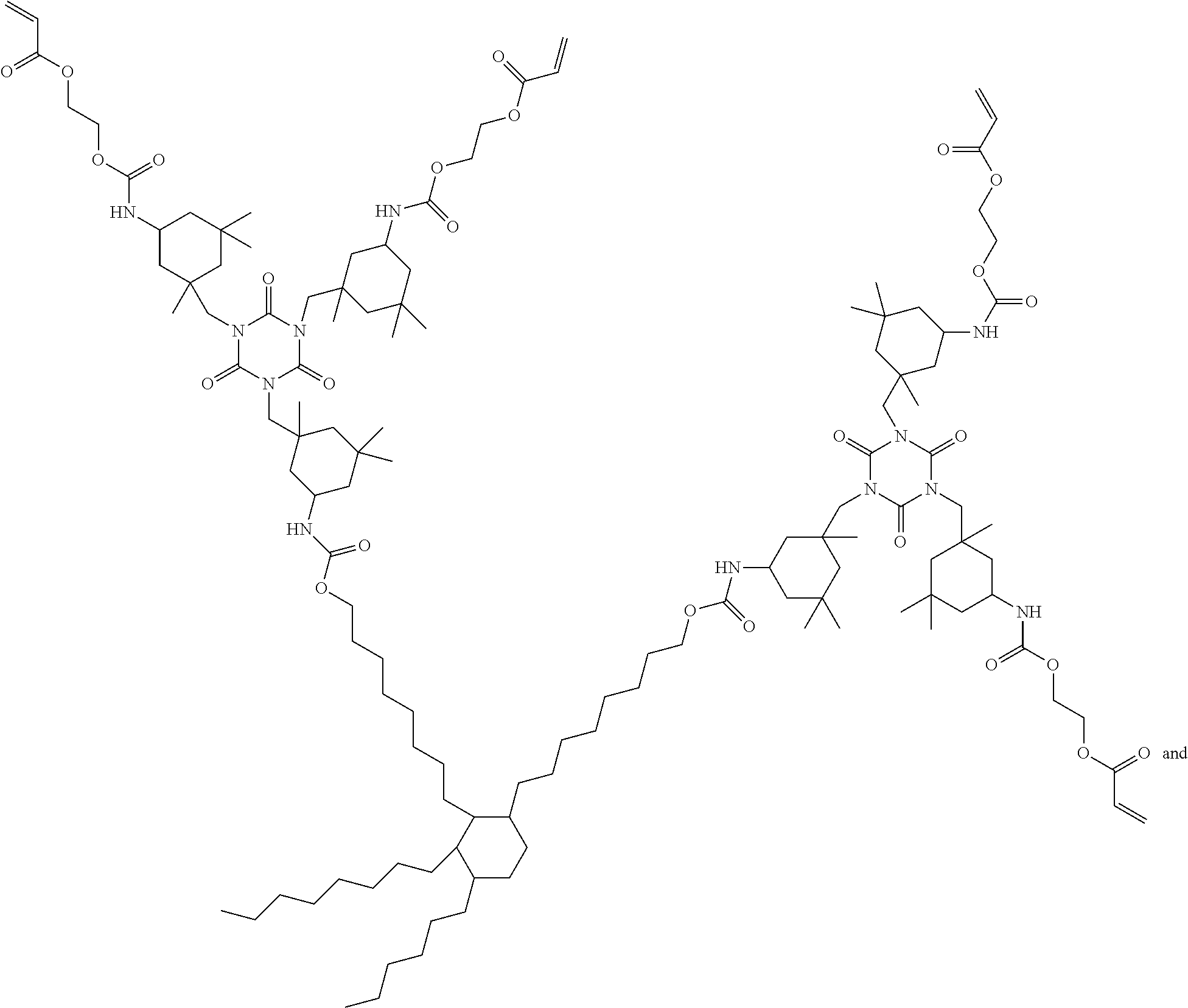Curable composition with rubber-like properties
a composition and compound technology, applied in the field of free radical cure compositions, can solve the problems of large resistance to the continued and/or expanded use of silicones in an industrial manufacturing environment, the inability to adhere other materials in plastics, and the fragility of optical fibers, etc., and achieve the effect of low viscosity
- Summary
- Abstract
- Description
- Claims
- Application Information
AI Technical Summary
Problems solved by technology
Method used
Image
Examples
example 1
Acrylate-Methacrylate Polyurethane
[0143]In a three-neck 500 mL round bottomed flask, equipped with a thermocouple attached to a temperature controller and a mechanical stirrer, was placed about 45.0 g of Priplast-3196 (Croda Coatings & Polymers, UK), about 60.0 g of dimer diol, about 9.8 g of tricyclodecane dimethanol and about 31.5 g of CAPA™ 2025 (Perstorp). To the flask was also added about 25.0 g of MDI, about 58.0 g of DDI 1410 and about 42.0 g of TMDI. The flask was placed in a heating mantle and stirred vigorously while increasing the temperature to about 100° C. for about two hours to complete the reaction of the isocyanate-capped polyurethane. The temperature was decreased to about 80° C. and about 23.8 g of hydroxyethyl acrylate and about 6.7 g of hydroxyethyl methacrylate along with about 0.32 g of butylated hydroxytoluene (BHT; Aldrich, Milwaukee, Wis.) were added to the flask. The mixture was heated up to about 100° C. for about 20 hours to complete the reaction of the ...
example 2
Acrylated Polyurethane
[0144]A 500 mL, three-neck flask was charged with about 108.0 g (0.200 mol) of dimer diol, about 9.8 g (0.050 mol) of tricyclodecane dimethanol and about 131.0 g (0.500 mol) of H12MDI. The flask was equipped with a mechanical stirrer, and temperature controller. The mixture was stirred and slowly the temperature was raised to about 100° C., and was held at that temperature for about 3 hours to complete the formation of the isocyanate capped polyurethane. Hydroxyethyl acrylate (about 60.9 g, 0.525 mol) was slowly added to the stirred material along with 1000 ppm of BHT. The material was allowed to stir at about 100° C. overnight (about 16 hours) to complete the reaction. The IR spectrum showed the complete disappearance of the isocyanate peak.
example 3
Hydrogenated Polybutadiene Diacrylate
[0145]A 2 L flat-bottomed flask, equipped with a Teflon® coated stir bar was charged with about 400 g (0.200 mol) of hydroxyl terminated polybutadine (MW=2,000). To the flask was also added about 1 L of heptane, and the mixture was heated and stirred to dissolve the thick resin. Once dissolved, about 1,000 ppm of BHT was added to the solution, along with about 32.4 g (0.450 mol) of acrylic acid, and about 1.0 g of methanesulfonic acid. A Dean-Stark trap was attached to the flask and the solution was heated to reflux for approximately 3 hours to complete the condensation reaction. The solution was cooled down to room temperature, and approximately about 20 g of sodium bicarbonate powder was added to the solution. The slurry was stirred for an additional about 2 hours to neutralize the acid. The material was then flash filtered through a glass-fritted funnel packed with about 50 g of silica gel. The solvent was removed under reduced pressure using ...
PUM
| Property | Measurement | Unit |
|---|---|---|
| elongation | aaaaa | aaaaa |
| viscosity | aaaaa | aaaaa |
| structure | aaaaa | aaaaa |
Abstract
Description
Claims
Application Information
 Login to View More
Login to View More - R&D
- Intellectual Property
- Life Sciences
- Materials
- Tech Scout
- Unparalleled Data Quality
- Higher Quality Content
- 60% Fewer Hallucinations
Browse by: Latest US Patents, China's latest patents, Technical Efficacy Thesaurus, Application Domain, Technology Topic, Popular Technical Reports.
© 2025 PatSnap. All rights reserved.Legal|Privacy policy|Modern Slavery Act Transparency Statement|Sitemap|About US| Contact US: help@patsnap.com



